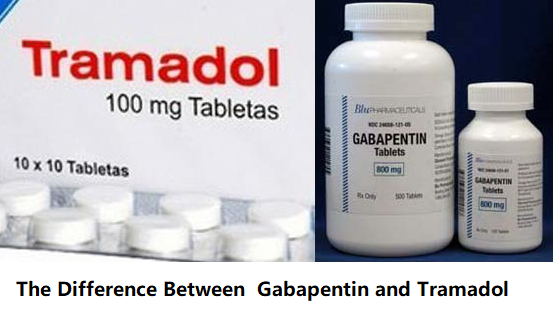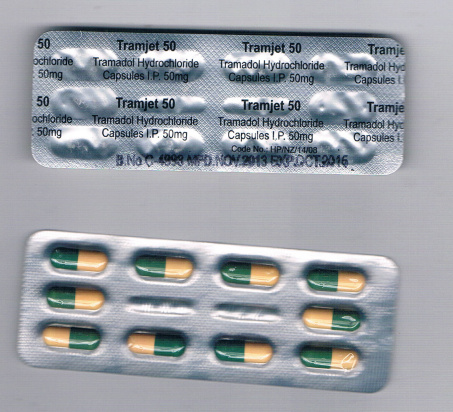Yes, it is safe for most people to take tramadol with acetaminophen, ibuprofen, or aspirin if they are old enough (aspirin is not recommended for children less than 16 years and tramadol should not be taken by children under the age of 12).

Taking tramadol in combination with other medicines can provide better pain relief than just taking one pain-relieving medicine by itself. The combination of tramadol and acetaminophen may be used to relieve acute pain that is severe enough to require an opioid medication, but there are many reasons why you would not want to give an opioid medication. When tramadol and acetaminophen are used together, the combination provides better pain relief than either medicine used alone.

The combination of tramadol and ibuprofen or tramadol and aspirin (in people over the age of 16) also provides better pain relief than either one used alone.
Tramadol should not be taken at the same time as codeine, because both medications are structurally similar, and the combination can result in increased drowsiness. This applies to medications such as Tylenol with codeine or acetaminophen with codeine. There are important considerations to keep in mind:
1. Tramadol and Acetaminophen:
- Tramadol is sometimes combined with acetaminophen (e.g., in products like Ultracet) for enhanced pain relief. This combination can be effective for managing moderate to severe pain.
2. Tramadol and Ibuprofen:
- Tramadol can be taken with ibuprofen. Using them together may provide better pain relief than either medication alone, as they work through different mechanisms. Ibuprofen is a nonsteroidal anti-inflammatory drug (NSAID) that reduces inflammation, while tramadol is an opioid that alters the perception of pain.
3. Tramadol and Aspirin:
- Tramadol can also be used with aspirin. Similar to ibuprofen, aspirin provides anti-inflammatory effects and can help with pain relief.
Considerations:
- Dosage: Be sure to follow recommended dosages for each medication. Combining them should not exceed the maximum daily dose for any of the medications involved.
- Side Effects: Both tramadol and NSAIDs can cause gastrointestinal side effects, such as nausea or stomach upset. Monitor for any adverse reactions, especially if you have a history of gastrointestinal issues.
- Medical Conditions: Always consult your healthcare provider if you have underlying health conditions, especially liver or kidney issues, or if you are taking other medications that might interact.
How should you combine tramadol with acetaminophen or ibuprofen?
Always follow the directions given on your medicine’s label. As a general guide for adults (aged 18 to 75 years) in acute pain:
- Tramadol: 50 to 100mg every 4 to 6 hours up to a maximum of 400mg/day
- Acetaminophen 2 tablets every 4 to 6 hours up to 5 days. Maximum of 8 tablets per day
- Ibuprofen: 200mg to 400mg up to 4 times a day. Maximum of 4 doses per day.

Caution when taking tramadol with other medications
Tramadol is not suitable for some people, and it should be used with caution in people taking the following medications:
- anticoagulants (blood thinners), such as warfarin, or other drugs that have blood-thinning effects such as aspirin or NSAIDs
- anticonvulsants, such as carbamazepine, phenytoin, phenobarbital, or primidone
- antidepressants, such as tricyclic antidepressants (eg, amitriptyline), monoamine oxidase inhibitors (eg, isocarboxazid, phenelzine, and tranylcypromine), or SSRIs (eg, fluoxetine, sertraline)
- antipsychotics (such as butyrophenones, phenothiazines, or thioxanthenes) and atypical antipsychotics (eg, olanzapine, quetiapine, ziprasidone)
- any medication that may cause drowsiness, such as benzodiazepines (eg, diazepam, lorazepam), first-generation antihistamines (such as doxylamine or promethazine), metoclopramide, or opioids (such as codeine, morphine)
- buprenorphine
- diuretics, such as furosemide
- heart medications, such as digoxin
- medications that are metabolized by the same enzymes such as bupropion, erythromycin, fluoxetine, ketoconazole, paroxetine, quinidine, or ritonavir
- migraine medications, such as almotriptan, eletriptan, or sumatriptan
- muscle relaxants, such as cyclobenzaprine
- other medications that affect serotonin, such as amphetamines, fentanyl, lithium, triptans (eg, almotriptan, eletriptan, or sumatriptan), or St. John’s Wort
- others, such as quinidine, or rifampin.

Pain Medications, Pain Relief, and Pain Management








